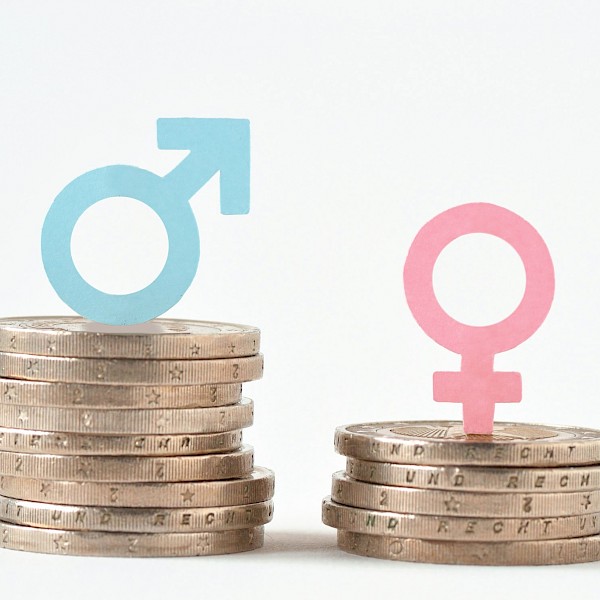The Gender Diversity Gap in Technology



Tackling the Gender Diversity Gap in Technology
The topic of the gender diversity gap in technology is increasingly on the front of the mind for this sector– but rarely for the right reasons. The ‘Google Memo,’ for example, made a minor celebrity of right-wing academic, Jordan Peterson, while the steady flow of negative news stories about Uber’s apparently toxic culture eventually led Travis Kalanick, the founder of the $50bn-valued company, to step down last June.
The statistics can be similarly disheartening. According to TechNation’s 2018 report, 48% of those polled felt that gender diversity was low in their local tech ecosystem; while women account for just 15% of workers in STEM fields and 5% of tech leadership positions, according to PwC. Perhaps more depressingly, looking back, the industry’s gender balance actually peaked in the US as long ago as 1991. And all this is despite the fact the fact that more diverse organisations are proven to deliver better results.
“Fostering a diverse workforce is critical if businesses are to remain competitive today,” comments Gerry So, Director and Co-founder of Okappy. “Our perspective is that facilitating better collaboration within the workplace is a crucial element of fostering more equal gender representation.”


Of course, the first step to addressing the issue is measuring it. Since this April, companies with more than 250 employees have been required to publish details on the different rates at which they pay men and women and the breakdown of the number of men and women at each level of the workforce.
The results of this included the fact that Apple UK has a 24% gender pay gap. While this isn't as bad as Ryanair's jaw-dropping 71.8% gap, it's considerably worse than the 9.7% median across all companies (though the company argues that the statistic is primarily due to the under-representation of women at senior levels).
Perhaps the starkest indicator of inequality is where there is a systematic gender pay gap between like-for-like roles – which sits alongside barriers to progression for women as a key problem. Mercer found that in tech “men and women are rated equally on performance at [each level] but men are twice as likely to have reached the management level, and men receive 20% more in terms of bonuses.”

While a male-orientated culture might assume that cultural defaults are gender neutral, the system can be set against women in subtle ways. Unconscious bias and ‘male-sounding’ job ads put women off (and women are far less likely than men to apply for jobs where they don’t meet all the requirements). This means that organisations setting out to foster diversity need to actively go out of their way to write gender-neutral job postings.
"Employers must address the root causes of inequality, from reducing bias and increasing transparency in recruitment, appraisal and promotion processes to normalising flexible working, for men and women, and offer financially viable parental leave packages", Chloe Chambraud, Gender Equality Director of Business in the Community, told the BBC. And change starts at the top – not just clamping down on discrimination and harassment (as Uber so famously failed to do) but actively embracing inclusion.


“Salesforce are really leading the way,” says Nadia Nagamootoo, Founder and Director of Avenir Consulting. “Their policies are very good, but what they have are incredible senior role models. Marc Benioff, the Chief Executive, is there but he’s also got other senior male champions such as Andrew Lawson, the Executive VP for UKI, who speak about this and are really championing gender equality in the organisation.”
Nadia identifies the three key tools for tackling the gender pay gap as being:
1. Inclusive policies
2. Financial incentives
3. Culture that drives change right from the board level.
And while inclusion means far more than affording flexibility for mothers, extending parental leave on equal terms to fathers can actually make a huge difference, says Nadia. Indeed, doing so transforms societal expectations around parenting and allows both parties to remain engaged with their workplaces.
“If we’re trying to fix the balance to create more equality for women,” says Nadia, “what’s necessary is to encourage and support men to step away from the workplace. For example, challenging the presenteeism culture and not feeling that there’s a pressure to work long hours; and that they feel supported in their role as a carer too.”
With a view to encouraging change, Malin Liden, of SAP Experience, recommends that organisations actively identify themselves as diversity-positive businesses and work to champion female role models. Meanwhile, following its poor showing in the gender pay gap report, Apple has made an effort to turn its reputation around by releasing more detailed pay gap figures, making new hires in diversity and HR, and launching several programmes geared towards inclusivity.

The Next Tech Girls programme similarly points the way forward for businesses to reduce the gender diversity gap in technology. The initiative helps young women to find tech work experience placements and to connect with mentors in the industry – with the view that women (and men) have to help and hire women and that change has to start at the grassroots level.
By making these connections, young women can be guided to pathways that previously did not exist – saving them setbacks that might otherwise permanently put them off. Employers that want to see change can follow the same steps (and can do so in collaboration with NTG), to begin to proactively incorporate diversity from the ground up.
“It's definitely encouraging to see how industry is changing – and prioritising diversity in the workplace is definitely a step in the right direction,” said Gerry. “We’re increasingly seeing decentralization and the availability of flexi-hours and remote working, all of which will help organisations to build on the diversity of their workforces”. Nadia also speaks of the benefits of flexible working. “If tech companies can make it acceptable for anyone to be working flexibly then it’s a much more inclusive organisation and you can take unconscious bias off the table”.
Change will only happen with consensus support and with a full buy-in from the leadership. Given the financial advantages of inclusivity and the enthusiasm of millennial workers for diverse businesses and flexible working – not to mention the moral imperative for equality – it’s hardly a difficult case to make.

Empiric is a multi-award winning business and one of the fastest growing technology and transformation recruitment agency's specialising in data, digital, cloud and security. We supply technology and change recruitment services to businesses looking for both contract and permanent professionals.

Read more (pdf download)
Empiric are committed to changing the gender and diversity imbalance within the technology sector. In addition to Next Tech Girls we proactively target skilled professionals from minority groups which in turn can help you meet your own diversity commitments. Our active investment within the tech community allows us to engage with specific talent pools and deliver a short list of relevant and diverse candidates.
For more information contact 02036757777 To view our latest job opportunities click here.